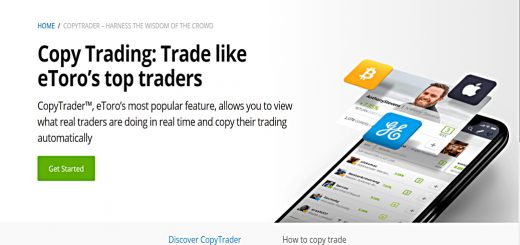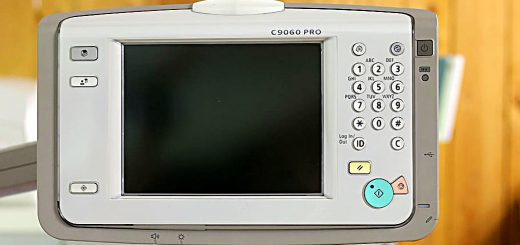Social Trading – an experiment

I’m not an active trader at the moment, and haven’t been for a few years. One of my resolutions for 2015 is to get back into it, but I’m going to have to trick myself a little.
Contents
Why I stopped trading
I traded for years (some good ones, some less so) and stopped for three reasons;
- as my portfolio grew relative to my income, I became uncomfortable speculating with so much money
- my work and personal life became so busy that I couldn’t devote the necessary time to trading
- market conditions became less favourable
The third point is worth expanding on. I started trading in the 1980s, and barring the 1987 crash – which happened when I was young enough that it didn’t scar me for life – markets were fairly benign until the dot-com craze. That boom was lucrative, and though the crash was painful, I got out quickly, unlike some of my friends.
Throughout the 2000s the markets never quite felt the same, and since the credit crunch in 2007/08 I feel like I’ve had to learn everything all over again. Like most people, I had no experience of low interest-rate, low growth markets, dominated by central bank policy, and it’s taken some years to get used to it (not that I will ever really get used to interest rates below inflation).
Getting back into things
But now I have some time on my hands, and the tools available to private investors have greatly improved, so it’s time to saddle up. My portfolio is a lot bigger than when I last traded, and so I’m still uncomfortable (at the moment) with speculating at the necessary levels to make a difference to my overall returns.
I plan to go slowly, feeding maybe 5-10% of my money into active accounts over the year. If things go well, I can increase the amounts next year.
I also plan to trick myself back into following short-term movements by using a few semi-passive and mechanical approaches to investment. I’ll be covering these in posts over the next few weeks, but the one I want to look at today is social trading.
Social Trading
The idea behind social trading is that you follow several other “expert” traders, allocating your capital between them. When they trade, the platform automatically copies their trades for you. The main products traded are FX pairs, indices and commodities.
I first came across the concept at a show in 2012, when a man from eToro included a £20 voucher in the event goody bag. I took a look at the website, but didn’t register. It slipped my mind until this New Year. In theory this an attractive product – new sources of profit (3rd party traders, FX and index trading) with moderate effort and potentially some fun along the way.
Whether it works in practice is another thing: can you find traders to follow who offer a consistent “product” rather than excessive risk taking in pursuit of large profits? With margin trading, blowing up your account is always a possibility.
Producing a shortlist
There are now sixteen social trading platforms available in the UK, according to the list at socialtradingguru.com. This site will be my guide for the initial phase of the experiment, which is to whittle down the 16 options to a manageable 4 or 5 that I can open a demo account with.
The comparison table at the site lists 24 attributes of the platforms, but a few pre-requisites stand out to me:
- demo account available
- automated trade copying
- lots of traders to follow (say 1,000 or more)
- trading in £, or at least in $ or €
- low minimum account size
The shortlist
This is enough to get us down to four platforms (the trader population requirement did most of the work):
- ZuluTrade
- eToro
- Ayondo
- Tradeo
All of these have demo accounts, real accounts at $300 or less, and more than a thousand traders to copy.
There may be an issue with Tradeo as it requires an MT4 broker (which I probably don’t have as I understand it to be a primarily margin- and FX-based system, and I don’t hold FX positions). The other three platforms include their own broker, which could be an advantage (less slippage) in automated trade copying at small sizes.
SocialTradingGuru.com has reviews of the first three sites, and here are a few highlights:
ZuluTrade
- ZuluTrade is easy to use and low cost.
- Anyone can be a “signal provider” so finding the few “professional” traders to follow can be difficult.
- Signal providers can use demo accounts (ie. not real money)
- Data is transparent and there are advanced risk and money management features
- Money management knowledge is required to make this a long term investment platform.
- Good mobile apps
eToro
- eToro has a simple interface and integrated risk and money management features
- There is an active social network and excellent training materials
- Slightly larger spreads and overnight rollover costs, but low slippage
- Trade history “Professional Investors” not available
- Historical gain calculation confusing and not transparent
- Trader Finder functionality could be improved
- Actual results may not match those displayed for the Professional Trader, since they often top up their accounts with their commission payments
Ayondo
- Intuitive and easy to use interface
- Fewer traders than ZuluTrade and eToro, but some good ones
- Commission model encourages traders to stay within acceptable risk levels (based on risk management as well as returns)
- Low slippage
- Wide range of instruments to trade
- Spread-betting account available for UK customers
(tax advantages) - Top Traders can use a demo account (not real money)
- Trader transaction history is viewable with difficulty, but can’t be downloaded for offline analysis
- No capital protection at trader level (only at account level)
- Can’t view contribution of individual traders towards your portfolio’s performance
Next Steps
So my next step will be to set up the demo accounts, and decide on my strategy for following. I would imagine this will be momentum-based (biased to recent performance) with some filters for quality of earnings (longer-term performance) and volatility (percentage of losing months/trades, maximum drawdowns etc).
More next week.



















I think this article all information is very informative and workable. So Thanks for this knowledgeable information.